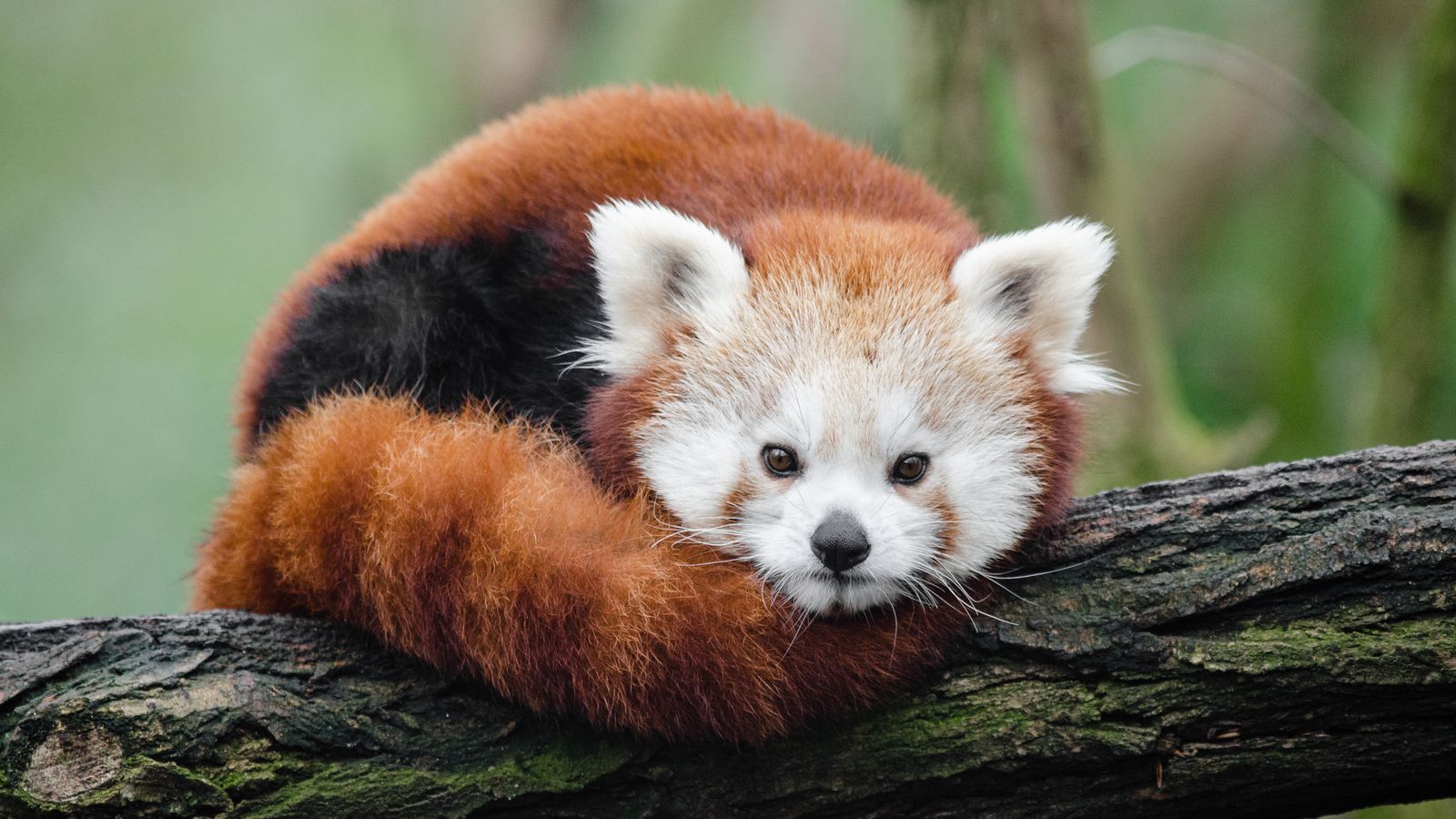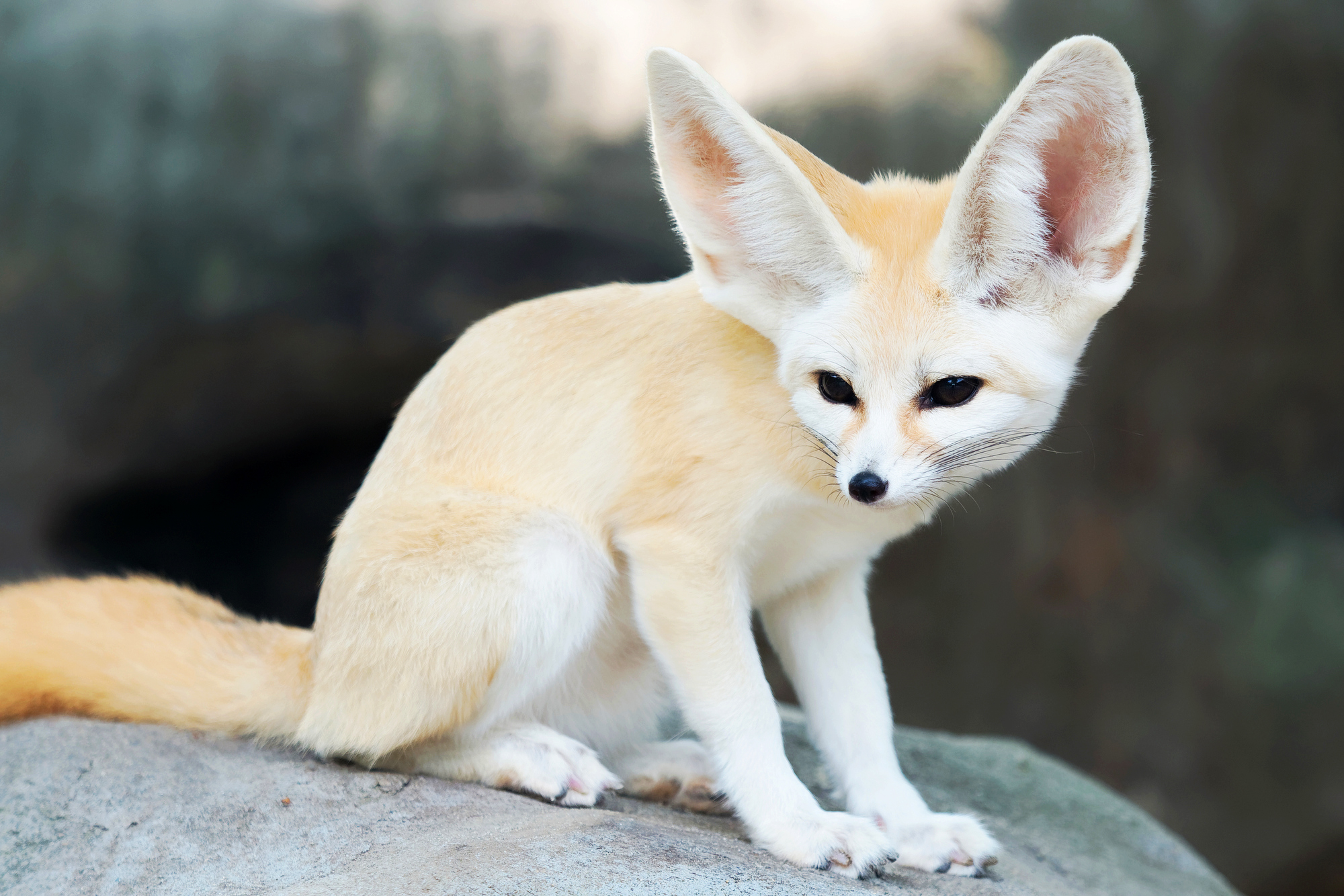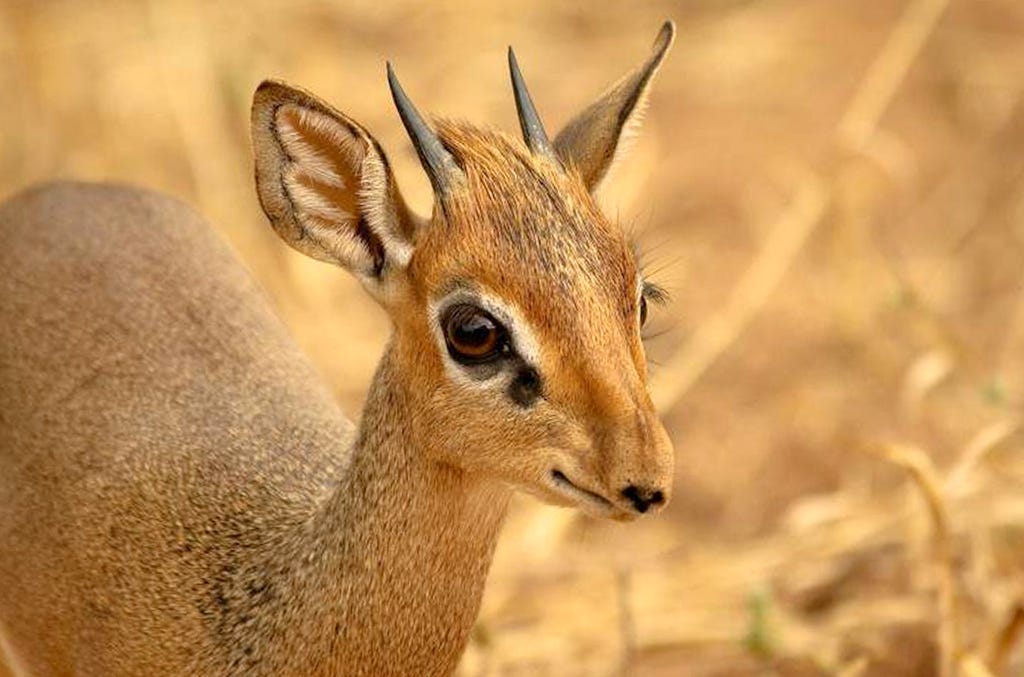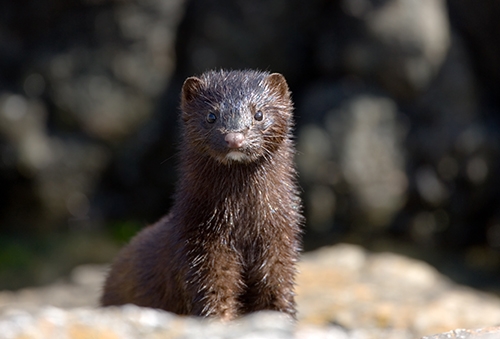
Cute Animals
Cute Animals
1. Margay

- The margay (Leopardus wiedii) is a small wild cat native to Central and South America.
- It has gray to golden-brown fur with black and brown spots.
- Each Margay requires about 16 square km (6.2 square miles) to live well in the forest.
- The tail can measure up to 70% of the head and body length and acts as a counterweight to help maintain balance.
- The adaptations of the Margay to their forest habitat is such that they are badly affected by their contracting ranges due to deforestation and land conversion as they refuse to cross open areas with no cover.
2.Red panda

- The red panda (Ailurus fulgens) is a carnivoran native to the eastern Himalayas and southwestern China
- They have large, round heads and short snouts with big, pointed ears
- Red pandas scent-mark territories using anal glands and urine, as well as scent glands located between their footpads.
- The feet have hairy soles, and the claws are semi-retractile.
- It is a very popular zoo animal and is frequently involved in the animal trade
3. Siberian flying squirrel

- The Siberian flying squirrel is an Old World flying squirrel found across Eurasia.
- Their limbs are relatively short and thick and their hind feet are significantly larger than their forefeet.
- Therefore, in the present study, we characterized the habitats of P.
- A female Siberian flying squirrel weighs about 150 grams, the males being slightly smaller on average.
- The most common sign of their presence is their droppings, which resemble orange-yellow rice grains and are often found beneath or on top of their nest.
4. Gundi

- Gundis (Family Ctenodactylidae) are cute rodents that are found in Northern Africa.
- Gundis or comb rats are a group of small, stocky rodents
- They live in rocky deserts across the northern parts of the continent.
- Gundis are from 17 to 18 cm in body length, with compact bodies covered in soft fur, short legs, and large eyes.
- Gundis are herbivorous, eating almost every type of available plant.
5.Fennec Fox

- The fennec fox is a small crepuscular fox native to the Sahara Desert, the Sinai Peninsula in Egypt, and the Arava and Negev deserts in Israel.
- The Fennec Fox is the smallest mammal in the world
- Their coats are long, soft, and thick and range in color from reddish cream to light fawn to almost white.
- Fennec foxes typically give birth to one litter of pups per year, with between two and five young in a litter.
- The fennec fox, also known as the desert fox.
6. Dik Dik

- A dik-dik is the name for any of four species of small antelope in the genus Madoqua that live in the bushlands of eastern and southern Africa.
- Fully grown, dik-diks stand about 12-16 inches tall at the shoulders and weigh 7-15 pounds.
- Dik-diks are herbivores whose diet mainly consists of foliage, shoots, fruit, and berries.
- Their noses also help in managing with the heat.
- Dik-diks stand about 30–40 centimetres at the shoulder, are 50–70 cm long, weigh 3–6 kilograms and can live for up to 10 years.
7.Siberian Chipmunk
- Siberian chipmunks usually live solitary lives, but during the winter they create a burrow, which they often share with another chipmunk.
- he overall coloration of its coat is yellow to brown.
- This species is native to Russia in northern European, Siberia to Sakhalin and Kunashir, extreme eastern Kazakhstan, northern Mongolia, northern and central China, Korea, and in Japan in Hokkaido, Iturup, Rishiri, Rebun, Teuri, and Yagishiri. It has been introduced at one confirmed locality, Karuizawa, on Honshu.
- The Siberian chipmunk exhibits sexual dimorphism, and size and body proportions are the only way to distinguish younger chipmunks from older ones.
- The Siberian Chipmunk has also been bred in captivity for many years to be kept as pets.
8.Tarsier

- Tarsiers are lemurlike in being nocturnal and having a well-developed sense of smell.
- The eyes and placenta are also simiiform in structure.
- It is a member of the approximately 45-million-year-old family tarsiidae, whose name is derived from its elongated "tarsus" or ankle bone.
- The newborn tarsier is born with much fur and eyes open.
- The Philippine tarsier has thin, rough fur which is colored gray to dark brown
9.The American mink

- The American Mink is a semi-aquatic mammal, which are well-known for their high valued furs, occur across Tennessee.
- The American mink (Neogale vison) is a semiaquatic species of mustelid native to North America, though human intervention has expanded its range to many parts of Europe, Asia and South America
- Gestation typically lasts 51 days for the American mink, but this period can vary, as implantation of the fertilized egg can be delayed for 1–14 days.
- Mink are carnivores and eat a wide variety of prey including rabbits, water voles, rats, birds, eggs, fish and domestic fowl.
10. Elephant shrew
- You can probably see why these little guys are called “elephant” shrews with their trunk-like nose.
- They are widely distributed across the southern part of Africa, and although common nowhere, can be found in almost any type of habitat, from the Namib Desert to boulder-strewn outcrops in South Africa to thick forest.
- Their ears and eyes are large, and, when alarmed, they run on their toes swiftly along paths they construct and maintain, sometimes leaping over obstacles.
- Gestation lasts two months, and litters contain one or two well-developed young.
- The Somali elephant shrew went unobserved from 1968 to 2020 but was rediscovered by a group of scientists in Djibouti.
cute animals in the world
most cute animals in the world |
| 1 | Margay |
| 2 | Red panda |
| 3 | Siberian flying squirrel |
| 4 | Gundi |
| 5 | Fennec Fox |
| 6 | Dik Dik |
| 7 | Siberian Chipmunk |
| 8 | Tarsier |
| 9 | The American mink |
| 10 | Elephant shrew |
Blog Upload on - Nov. 25, 2021
Views - 5837

posted By -
Shariq Daudi
Related Posts
-
 Animals Helpline In Maharashtra
Animals Helpline In Maharashtra
March 5, 2022 -
Animals Helpline In Haryana
March 12, 2022 -
Types of frog
Dec. 16, 2021 -
Poisonous snakes of the world
Dec. 21, 2021 -
Animals Helpline In Uttar Pradesh
March 3, 2022 -
Animals eat both plants and animals
Dec. 28, 2021 -
Animals
Jan. 25, 2022 -
Animals Helpline In Karnataka
March 12, 2022
Blog Topics
Bakra Mandi List ,
इंडिया की सभी बकरा मंडी लिस्ट ,
बीटल बकरी ,
Beetal Goat ,
सिरोही बकरी ,
Sirohi Goat ,
तोतापुरी बकरी ,
Totapuri Breed ,
बरबरी बकरी ,
Barbari Breed ,
कोटा बकरी ,
Kota Breed ,
बोर नस्ल ,
Boer Breed ,
जमुनापारी बकरी ,
Jamnapari Breed ,
सोजत बकरी ,
Sojat Breed ,
सिंधी घोड़ा ,
Sindhi Horse ,
Registered Goats Breed Of India ,
Registered cattle breeds in India ,
Registered buffalo breeds in India ,
Fastest Bird in the World ,
Dangerous Dogs ,
Cute Animals ,
Pet Animals ,
Fish for aquarium ,
Fastest animals in the world ,
Name of birds ,
Insect name ,
Types of frog ,
Cute dog breeds ,
Poisonous snakes of the world ,
Top zoo in India ,
Which animals live in water ,
Animals eat both plants and animals ,
Cat breeds in india ,
Teddy bear breeds of dogs ,
Long ear dog ,
Type of pigeons ,
pabda fish ,
Goat Farming ,
Types of parrot ,
Dairy farming ,
सिंधी घोड़ा नस्ल ,
बोअर नस्ल ,
Persian Cat ,
catfish ,
बकरी पालन ,
poultry farming ,
डेयरी फार्मिंग ,
मुर्गी पालन ,
Animals ,
पब्दा मछली ,
Buffalo ,
All animals A-Z ,
दुनिया के सबसे तेज उड़ने वाले पक्षी ,
पर्सियन बिल्ली ,
What is Gulabi Goat ,
What is Cow ? ,
भैंस क्या होती है? ,
गुलाबी बकरी ,
गाय क्या होती है? ,
बकरियों का टीकाकरण ,
बीमार मुर्गियों का इलाज और टीकाकरण। ,
Animals Helpline In Uttar Pradesh ,
Animals Helpline In Maharashtra ,
Animals helpline In Punjab ,
Animals Helpline In Madhya Pradesh ,
Animals Helpline In Andhra Pradesh ,
Animals Helpline In Karnataka ,
Animals Helpline In Haryana ,
डॉग्स मैं होने वाली बीमारियां ,
उत्तर प्रदेश पशु हेल्पलाइन ,
दुनिया के दस सबसे सर्वश्रेष्ठ पालतू जानवर ,
Dog Diseases ,
Top Ten Best Pets in The World ,
महाराष्ट्र पशु हेल्पलाइन ,
बकरीद 2022 ,
मध्य प्रदेश पशु हेल्पलाइन ,
बलि प्रथा क्या है ,
Bakrid 2022 ,
What are Sacrificial Rituals ,
गाय मैं होने वाले रोग ,
Cow Desiases ,
भेड़ पालन ,
Sheep Farming ,
कबूतर पालन ,
रैबिट फार्मिंग ,
Gaushala In Uttar Pradesh ,
GAUSHALA IN HARYANA ,
DELHI BIRD & ANIMAL HELPLINE ,
Maharashtra Bird Helpline ,
गौ पालन पंजीकरण ,
बकरी पालन व्यवसाय ,
लम्पी स्किन डिजीज ,
भेड़ पालन व्यापार ,
Lumpy Skin Disease ,
Goat Farming Business ,
भारत में टॉप डॉग्स की नस्लें ,
मछली पालन व्यापार ,
डॉग को कैसे प्रशिक्षित या ट्रेन करें ,
टॉप नैचुरल फूड फॉर डॉग्स ,
Top Natural Foods for Dogs ,
How To Train A Dog ,
Fish Farming Business ,
बकरी के दूध का उपयोग ,
Use Of Goat Milk ,
Sheep Farming Business ,
बकरियों के लिए टॉप 5 सप्लीमेंट ,
Vaccination Of Goat And Sheep ,
Top 5 Supplements for Goats ,
डॉग्स के प्रकार और डॉग्स की सभी नस्लों के नाम की लिस्ट ,
Types Of All Dog Breed Names A to Z ,
Types Of Fish Breed Names A to Z ,
दुनिया के 10 सबसे बड़े जानवर ,
Types of All Goats Breed Name A to Z ,
Top 10 Longest And Heaviest Crocodiles ,
Top 10 Highest Flying Birds ,
Top 10 Largest Snake In The World ,
Top Goats Breeds For Milk ,
Major Diseases In Goats ,
Manx Cat - Cat Without A Tail ,
Top 10 Largest & Heaviest Turtles ,
Top 10 Smartest Dog Breeds ,
Name of 5 Dog that went to Space ,
The role of animals in human culture and religions ,
The role of goats in sustainable agriculture and land management ,
8 Things You Should Never Do To Your Dog ,
Green Anaconda ,
25 Amazing Types Of Snakes ( More Details ) ,
Reticulated Python ,
Black Mamba ,
King Cobra ,
Garter Snake ,
Golden Flying Snake ,
Eastern Tiger Snake ,
Benifits Of Pet Adoption ,
Top 10 Dog Safety Tips ,
Animal Behavior, Thoughts On Choosing A Breed To Raise ,
How To Get Your Dog To Listen To You ,
A to Z List of Bird Names With Picture ,
The 10 Best Dog-Friendly Places To Go In Your India ,
Healthy Habits For Animals ,
डॉग्स में होने वाले रोग ,
गाय में होने वाले रोग ,
मानव संस्कृति और धर्मों में जानवरों की भूमिका ,
बकरियों में होने वाले प्रमुख रोग ,
टिकाऊ कृषि और भूमि प्रबंधन में बकरियों की भूमिका ,


Nice Blog